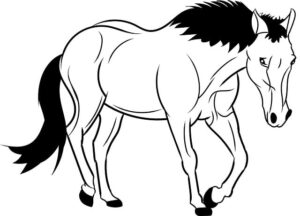 The first post-war Grand National was staged at Aintree on April 5, 1946 and, notwithstanding the cancellation of the Grand National Festival in 2020, due to the global COVID-19 pandemic, the celebrated steeplechase has been run over more or less the same course and distance ever since. Of course, in 1993 the Grand National was officially declared void after the majority of the jockeys failed to realise a second false start had been called and seven, led by the hapless John White on Esha Ness, completed the course.
The first post-war Grand National was staged at Aintree on April 5, 1946 and, notwithstanding the cancellation of the Grand National Festival in 2020, due to the global COVID-19 pandemic, the celebrated steeplechase has been run over more or less the same course and distance ever since. Of course, in 1993 the Grand National was officially declared void after the majority of the jockeys failed to realise a second false start had been called and seven, led by the hapless John White on Esha Ness, completed the course.
However, at the time of writing, in 76 bona fide renewals since World War II, the Grand National has been won by the market leader, or joint market leader, on 11 occasions. The first post-war winning favourite, or joint-favourite, was Freebooter who, in 1950, survived a near-catastrophic blunder at The Chair to win by 15 lengths under 11st 11lb. In 1960, Merryman II was another easy winner but, in 1973, Red Rum was anything but, only reeling in his main market rival, Crisp, in the shadow of the post, having been 30 lengths behind the clear leader at Becher’s Brook on the second circuit. Grittar, ridden by 48-year-old amateur Dick Saunders, in 1982, Rough Quest, in 1996, and Earth Summit, in 1998, completed the sextet of winning favourites before the turn of the century.
More recently, Hedgehunter, a rare final-fence faller in 2004, set the record straight with a ready, 14-length win in 2005, Comply Or Die forged clear from the Elbow to win by 4 lengths in 2008 and Don’t Push It gave A.P. McCoy his first National winner, at the fifteenth attempt, in 2010. In 2019, Tiger Roll was sent off the shortest-priced winning favourite since Poethyln, exactly a century earlier and, in 2023, Corach Rambler became just the third National winner trained in Scotland, after Rubstic in 1979 and One For Arthur in 2017.